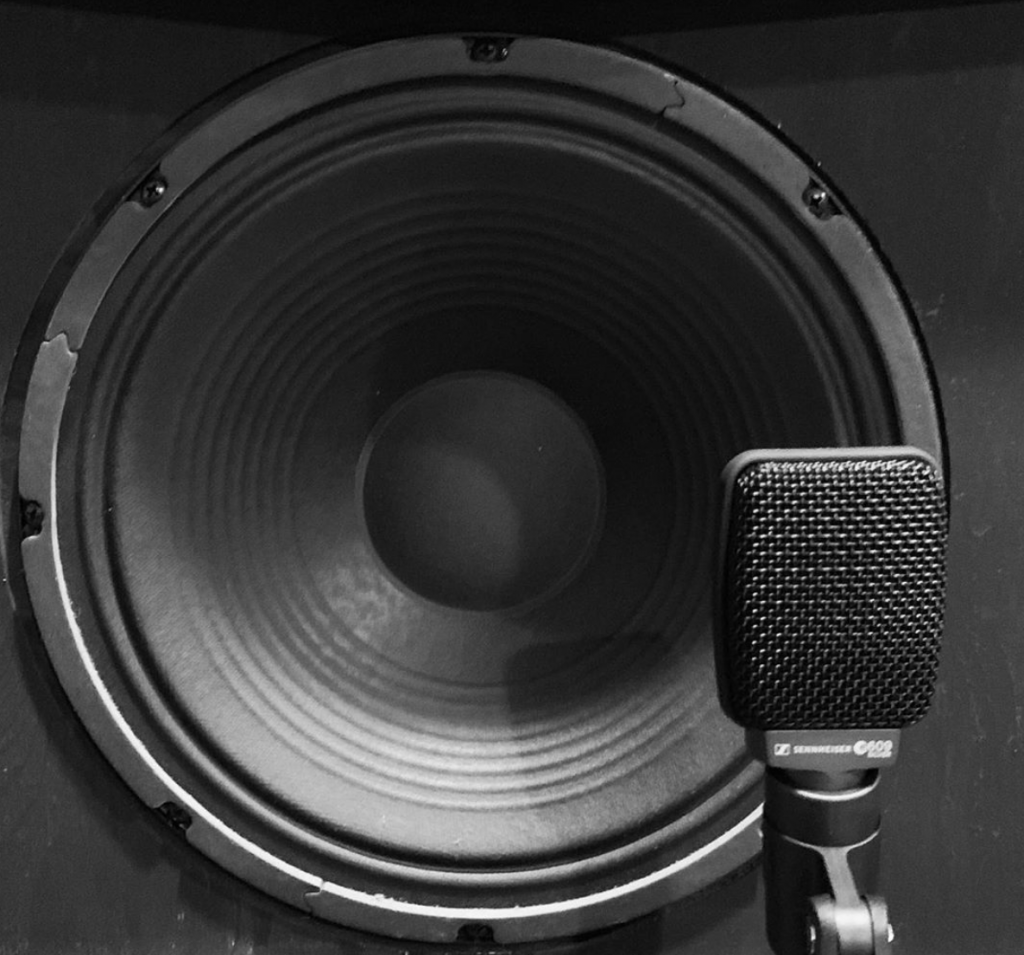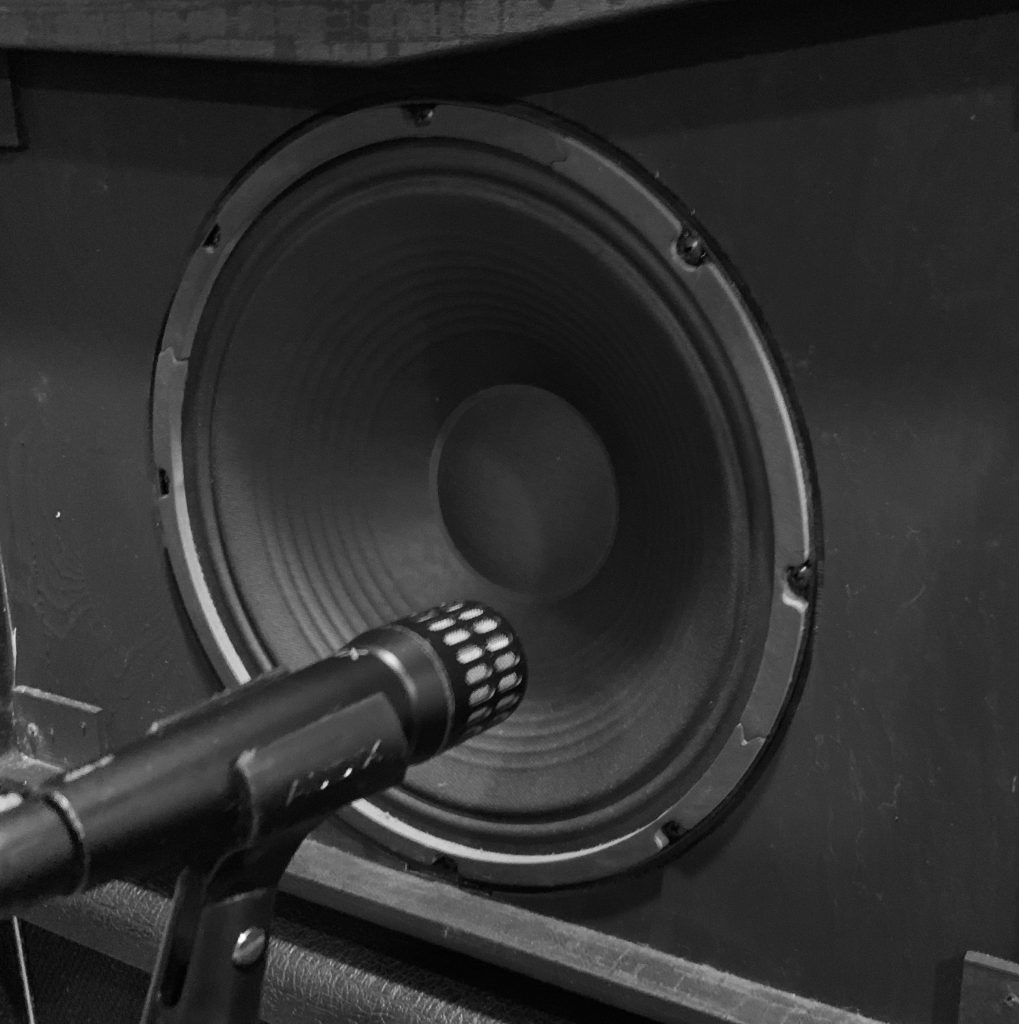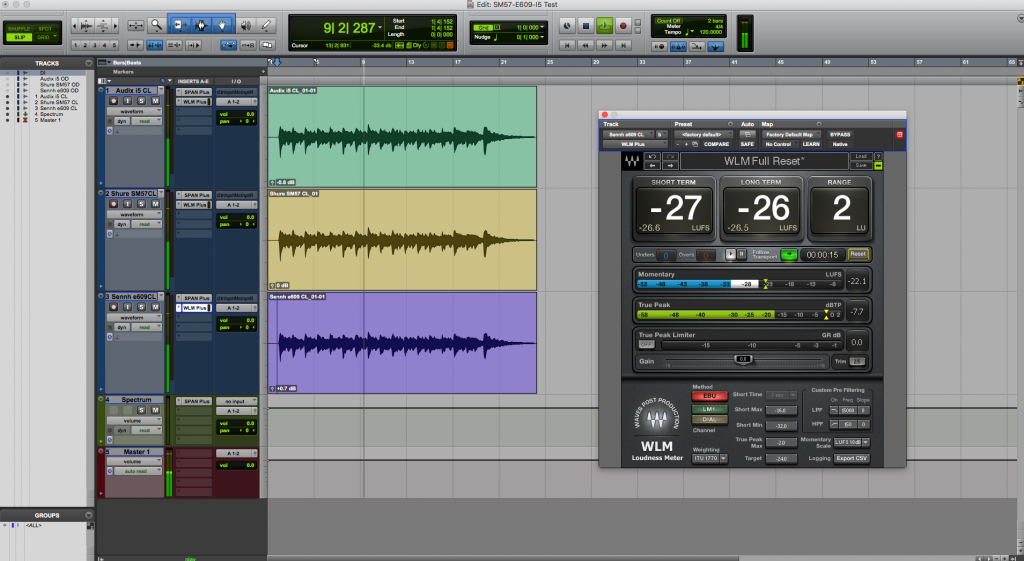I decided to compare the three dynamics in my mic locker: Audix i5 vs. Shure SM57 vs. Sennheiser e609. These are often used to record guitar amps, drums, or similar loud sound sources. To get objective results, I needed the exact same performance. So, I reamped a DI’ed, clean guitar take. For the initial DI recording, I used my Fender Stratocaster in the neck pickup position into the 47K ohm Hi-Z input of the Universal Audio LA-610 Mk II, then to Lynx Aurora 8 connected to the computer via USB 2.0.
I then switched to Avid Eleven Rack (11R) as the audio interface for the reamping capability of this renowned device among guitar enthusiasts.
When you set the Output to Amp selector to Rig Input in 11R, the DI’ed guitar signal in Pro Tools will be sent out to the amp at the instrument level. The guitar amp I used was Crate 5112VFX. It is a tube amp. I removed the speaker grille.

I have the microphones at the exact spot one at a time to capture the multiple recordings of the same performance. I positioned the mic capsules four inches away from the speaker and two inches to the left from the right side of the speaker cone to get the off-axis tone. (See the image above)
I had almost matched the recording levels for each microphone on the way to Pro Tools, but I also fine-tuned the levels with clip gain using Waves WLM Plus.
There wasn’t a noticeable difference between the transient responses of the microphones, but there were differences in the frequency response. Before I dig deeper, I need to tell you that there is not “a winner” in this test. These three mics have slightly different colors, and you can use the one that complements the sound source on occasion.
In general, the Audix i5 sounds slightly scooped, and it has a warm low end with a shiny top.
Shure SM57, the industry standard, is the one with the weakest bottom of the three (note that this may not always be a bad thing depending on where you are using it), but the mids are strong, and there is a balanced top end.
Sennheiser e609 is as warm as the Audix i5, but the mids are not scooped. Starting from 500 Hz until 5 kHz, the high-mids and the highs are slightly lower than the other two. Between 1.5 kHz and 3 kHz, not so slightly, the difference becomes about 5 dB in this range.
In this test, i5 and e609’s low-end response was very close from 60 Hz to 200 Hz. In the 300 Hz – 700 Hz area, e609 was the strongest, which adds to the warmth of its overall tone. i5 was a couple of decibels weaker, and this explains the slightly mid-scooped sound. From 700 Hz to 1.5 kHz, SM57 is more prominent than the other two, which also explains why this iconic mic typically captures a prominent electric guitar sound, a mid-heavy instrument.
For further reference, I suggest reviewing the frequency response graphs for each microphone, and you will figure the information on the graphs are in parallel with my empirical findings.
Feel free to download the audio files below and import them to your DAW for comparison. These are 24 bit, 44.1 kHz wave files.
Audix i5
Shure SM57
Sennheiser e609





